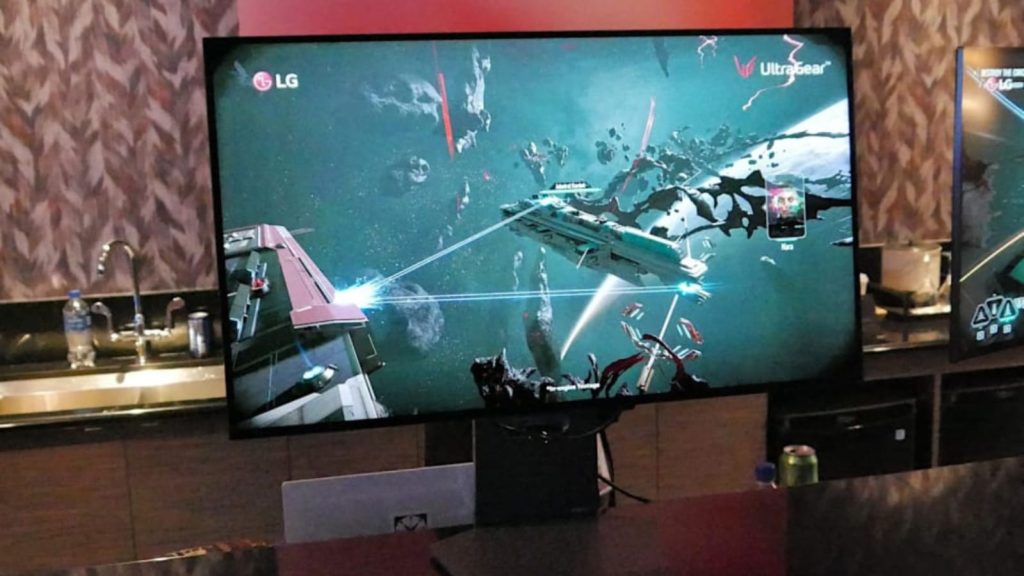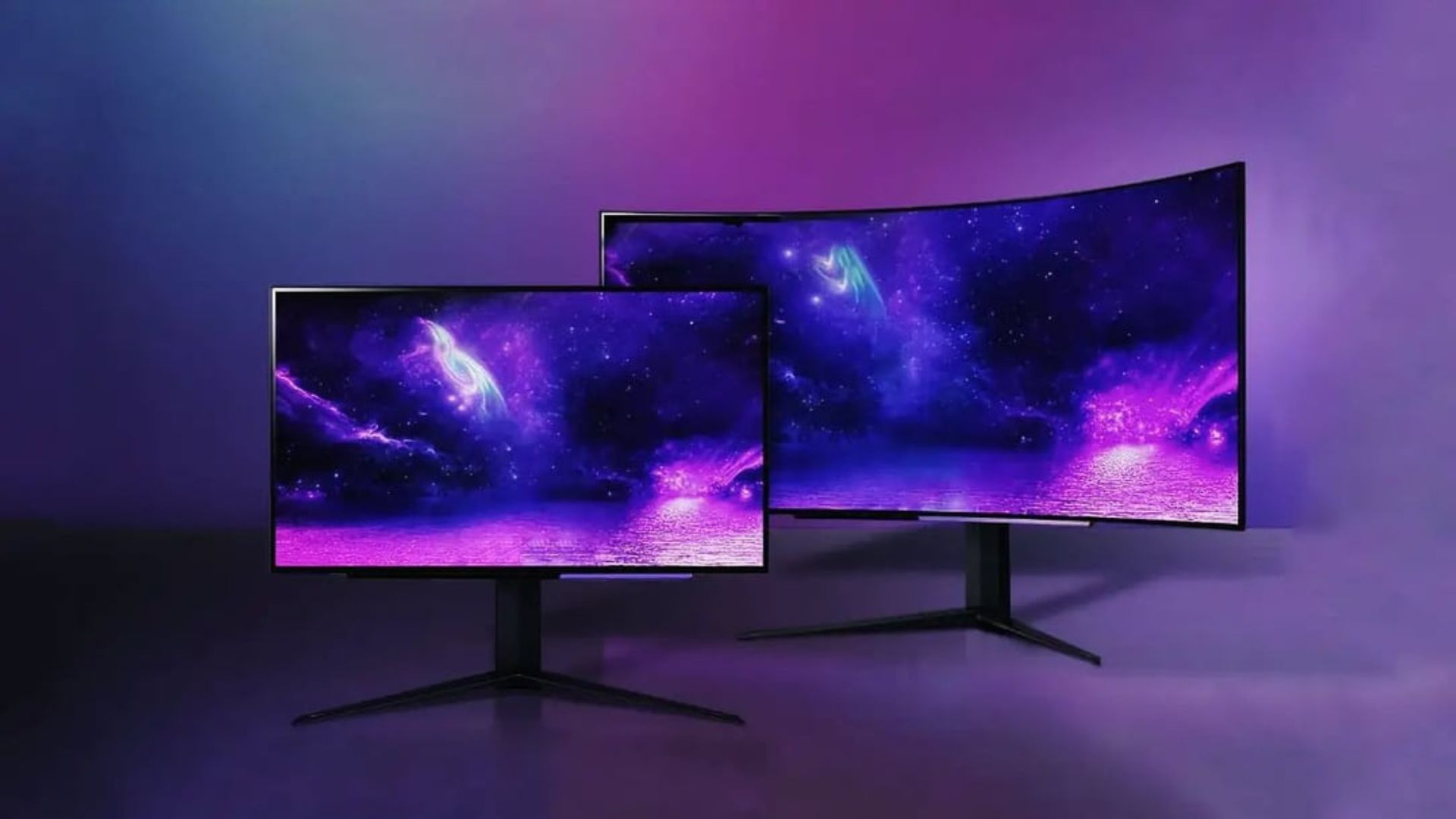“This may just be the best monitor I’ve ever reviewed. In fact, don’t worry about my face. Have a look at this! 32 inches, 4K at 240Hz, or with its unique dual mode at 1080p, it can hit a massive 480Hz. It is OLED, so we’re looking at 0.03 ms response times. VRI is taken care of by G-Sync compatibility, and we also get FreeSync Premium Pro.
This thing is genuinely shaping up to be the ultimate gaming monitor. So as I metaphorically and literally roll up my sleeves, let me tell you everything you need to know about this and whether it’s actually worth buying. Okay, so normally, at this point, I will be calling it It’s the best monitor I’ve ever tested, and possibly the best overall monitor you can buy. The thing is, it’s not the only show in town because there’s this new wave of 4K, 32-inch, 240-Hz OLED displays. Using W OLEDs like we have here or QD OLEDs all coming out of the next few months, all fairly similarly priced So on paper, the LG has some pretty stiff competition, but it does have a couple of twicks up its sleeve. That’d be delicious. A couple of tricks up its sleeve. Versus the Asus, which I have here, and I’ll be reviewing it properly in a few days. It was not a good idea to pick that up because it’s also 32 inches. Versus that, we have obviously the dual mode 480Hz at 1080p; none of the rivals offer that. We get some surprisingly good-sounding speakers. You can also rotate it 90 degrees and have it in portrait mode. We get slimmer bezels and a very nice anti-glare matte screen coating, so it’s a lot less reflective.

On the other hand, the ROG can sustain high brightness, particularly in HDR, thanks to its custom heatsink. It also gets a couple of extra ports, including USB-C with power delivery, so you can plug in your laptop more easily. It has Dolby Vision, although coming via a software update later this year, and also a uniform brightness mode, plus this screw mount on top, which is handy for adding light bars or streaming cameras. And the Asus is also using a QD OLED panel versus the LG’s W OLED, but more on that in a second. Alienware has something similar to QD OLED with Dolby Vision and a curve for some reason. I thought we’d all agree to be moved on from that, but nope, curve screen right there. And then there’s the MSI one, which is meant to be a little bit more affordable. Although in the UK, it seems to be the same price as the LG. So it kind of depends on what you want from the screen.
And it’s great that we have so many options, and hopefully over time this will drive prices down as well, because I remember the Alienware QD OLED Ultra-wide like a year ago. It was the only one with that panel everyone wanted once it was impossible to find the prices stayed. High forever, hopefully, because we have four very similar options, each with their own little pros and cons. You will know over the next few months. We may see prices drop a little bit. How much is it you ask well in the US? It’s thirteen hundred ninety-nine dollars, fourteen hundred dollars essentially before sales tax, and in the UK, it’s probably going to be about thirteen hundred and fifty pounds, a lot of money, but I would argue for the specification. It’s not that bad. Although certainly this is still very much for the enthusiast market, But let’s talk about LG’s party trick, dual mode. So 4K at 240 hertz or 480 hertz at 1080p. Although my problem is that, before I even dive in, I don’t think I can perceive 360 up to 480. You might be able to, but certainly it’s not the same jump as, you know, 120 to 240 or even just 240 to 360. 480, and these e-sports levels of high refresh rates are very much for young athletic professionals, which I am not. Anyway, simply tap this button on the base of the screen, and it switches to 480 hertz T80p. And that’s still with a 0.03 millisecond greater grade response time, which should make this fantastic for e-sports.
Now, obviously, T80p is a little bit grainy—quite grainy on a 32-inch screen, although it is less noticeable in games. And if you can get close to 480 FPS in your games, and that is a big if, particularly for competitive shooters, the responsiveness is just insane. It is definitely a bit overkill for less twitchy games, and 240 FPS at 4K is still plenty smooth enough, although that is itself a challenge to get 240 FPS at 4K in your games, particularly new AAA titles, even with DLSS. Although CS2, Rainbow Six Siege, and League of Legends are games, you’re not going to have a problem there. Well, I say that running on a 1490, it’s going to depend on your setup. But still, having a super high hertz future proves you by giving you extra headroom for when you do upgrade your system down the line. Also, if you have ever dabbled in esports or professional gaming, you will know that none of them use 32-inch monitors because it’s just too much real estate for your eyes to dart around. They prefer 25- to 24-inch monitors. Well, LG thought of this and has included cropped 24 and 27-inch modes. But for whatever reason, it looks even more grainy than at 32 inches. So I’m not sure I would recommend using it that way. I must admit, I do love the look of this.



